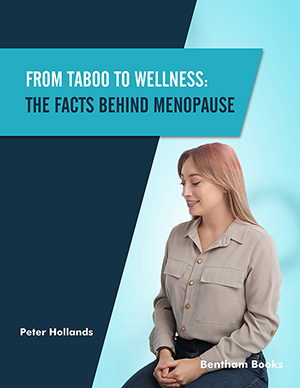Abstract
Background: Fatigue is a common problem in pregnancy and is associated with negative outcomes.
Objectives: This study aimed to determine the predictors of fatigue in pregnant women.
Methods: This cross-sectional study was conducted on 150 pregnant women with a gestational age of 12-18 weeks visiting the healthcare centers in Mahabad-Iran, 2021. Fatigue was assessed via the modified Multidimensional Assessment of Fatigue (MAF) checklist, depression via the Edinburgh Postnatal Depression Scale (EPDS), stress and anxiety via Depression, Anxiety and Stress Scale-21 (DASS-21), well-being via WHO-5, and positive and negative affect via International Positive and Negative Affect Schedule-Short Form (I-PANAS-SF). The general linear model was used to estimate the degree of the effect of each independent variable (sociodemographic characteristics, depression, stress, anxiety, positive and negative affect, and well-being) on the dependent variable (early pregnancy fatigue).
Results: The mean (SD) fatigue score was 21.91 (7.07), within the 0-50 possible range. The majority of pregnant women (87.3%) suffered from fatigue. Based on the Pearson or Spearman correlation analysis, a significant correlation was observed between fatigue and depression (r= 0.334, P<0.001), anxiety (r= 0.327, P<0.001), stress (r=0.329, P< 0.001), well-being (r= -0.279, P<0.001), and negative affect (r= 0.308, P<0.001). Based on the adjusted general linear model, the education, stress and negative affect variables were predictors of fatigue.
Conclusion: The education, stress and negative affect predict fatigue in pregnant women, and their identification contributes to the designation of interventions to mitigate fatigue in this group. More studies are required to identify the causes of fatigue during pregnancy.
Keywords: Fatigue, mental health, pregnancy, COVID-19, predictors, pandemic.
[http://dx.doi.org/10.1016/j.jpsychores.2006.09.011] [PMID: 17270573]
[http://dx.doi.org/10.1097/01.jom.0000249782.60321.2a] [PMID: 17215708]
[http://dx.doi.org/10.1016/j.amjsurg.2007.10.004] [PMID: 18194679]
[http://dx.doi.org/10.1111/j.1552-6909.1999.tb01968.x] [PMID: 9924868]
[http://dx.doi.org/10.5665/sleep.1634] [PMID: 22294816]
[http://dx.doi.org/10.1111/j.1552-6909.1986.tb01409.x] [PMID: 3639925]
[http://dx.doi.org/10.1111/nhs.12149] [PMID: 24835296]
[http://dx.doi.org/10.1136/bmj.m3260] [PMID: 32839164]
[http://dx.doi.org/10.3390/ijerph17051729] [PMID: 32155789]
[http://dx.doi.org/10.1080/02646838.2020.1786037] [PMID: 32573258]
[http://dx.doi.org/10.22038/IJP.2020.51632.4106]
[http://dx.doi.org/10.21203/rs.3.rs-32235/v1]
[http://dx.doi.org/10.1177/0020764020941889] [PMID: 32650681]
[http://dx.doi.org/10.22038/IJOGI.2013.1168]
[http://dx.doi.org/10.1097/01.NMC.0000281959.71454.e5] [PMID: 17667284]
[http://dx.doi.org/10.1001/archinte.1993.00410240067007]
[http://dx.doi.org/10.1186/s12889-017-4623-y] [PMID: 28806984]
[http://dx.doi.org/10.1016/j.neuroscience.2015.09.001] [PMID: 26343292]
[http://dx.doi.org/10.1016/j.jad.2017.05.003] [PMID: 28531848]
[http://dx.doi.org/10.1016/j.jad.2020.07.126] [PMID: 32777604]
[http://dx.doi.org/10.1097/00006199-199303000-00006] [PMID: 8455994]
[http://dx.doi.org/10.1002/art.11405]
[http://dx.doi.org/10.18295/squmj.2019.19.01.009] [PMID: 31198595]
[http://dx.doi.org/10.4103/ijpvm.IJPVM_172_17] [PMID: 31143427]
[http://dx.doi.org/10.1192/bjp.150.6.782] [PMID: 3651732]
[http://dx.doi.org/10.1186/s12884-014-0420-0] [PMID: 25616717]
[http://dx.doi.org/10.22038/IJP.2020.51174.4063]
[PMID: 23115428]
[http://dx.doi.org/10.1186/1471-244X-7-11] [PMID: 17408479]
[http://dx.doi.org/10.1016/0005-7967(94)00075-U] [PMID: 7726811]
[http://dx.doi.org/10.1037/0022-3514.54.6.1063] [PMID: 3397865]
[http://dx.doi.org/10.1177/0022022106297301]
[http://dx.doi.org/10.22075/jcp.2017.2237]
[http://dx.doi.org/10.1080/14767058.2016.1190821]
[http://dx.doi.org/10.1159/000376585] [PMID: 25831962]
[PMID: 25742037]
[http://dx.doi.org/10.20982/tqmp.03.2.p043]
[http://dx.doi.org/10.34172/aim.2020.102] [PMID: 33220695]
[http://dx.doi.org/10.1186/s12884-021-03694-9] [PMID: 33722198]
[http://dx.doi.org/10.1001/jamanetworkopen.2020.14053]
[http://dx.doi.org/10.1136/bmj.325.7362.480] [PMID: 12202331]
[http://dx.doi.org/10.1111/j.1479-828X.1999.tb03122.x] [PMID: 10687753]
[http://dx.doi.org/10.1016/0022-3999(95)00018-6] [PMID: 7490693]
[http://dx.doi.org/10.1037/1040-3590.20.2.150] [PMID: 18557692]
[http://dx.doi.org/10.1055/s-2007-993855] [PMID: 10458531]
[http://dx.doi.org/10.1177/0884217505279997] [PMID: 16227513]
[http://dx.doi.org/10.1016/S0165-1781(98)00139-5] [PMID: 10195312]
[http://dx.doi.org/10.22038/JFMH.2009.1214]
[http://dx.doi.org/10.5812/ijpbs.8823]
[http://dx.doi.org/10.1371/journal.pone.0250872] [PMID: 33914814]
[http://dx.doi.org/10.1016/j.ijnurstu.2007.08.004] [PMID: 17905253]
[http://dx.doi.org/10.1080/15487733.2020.1776561]












